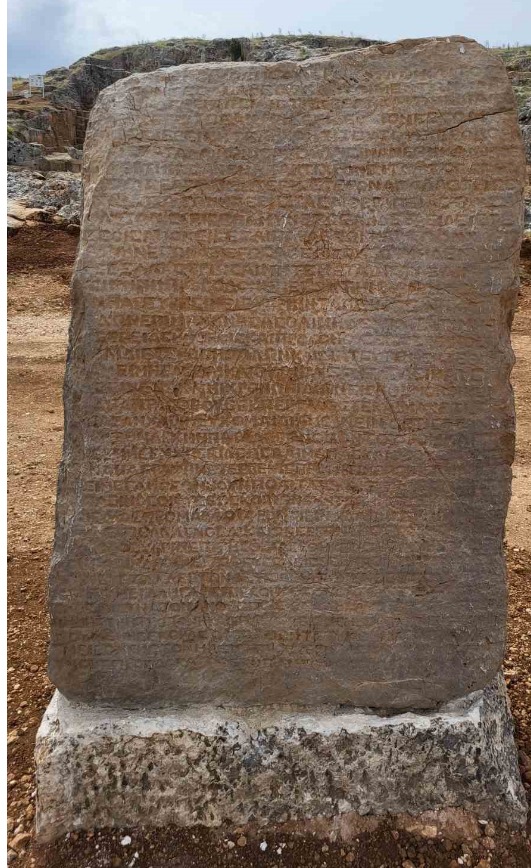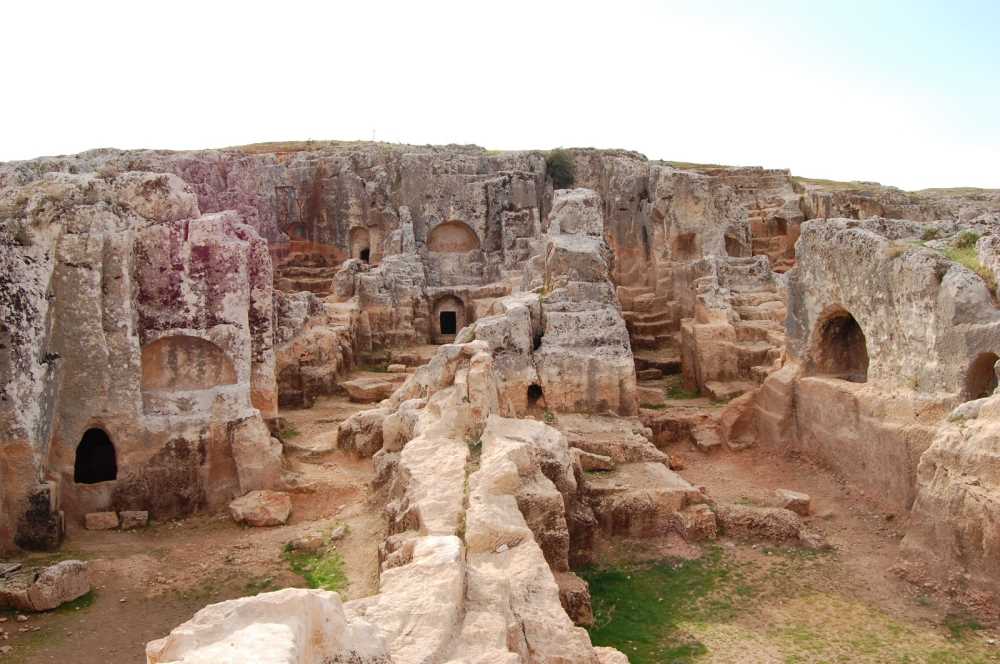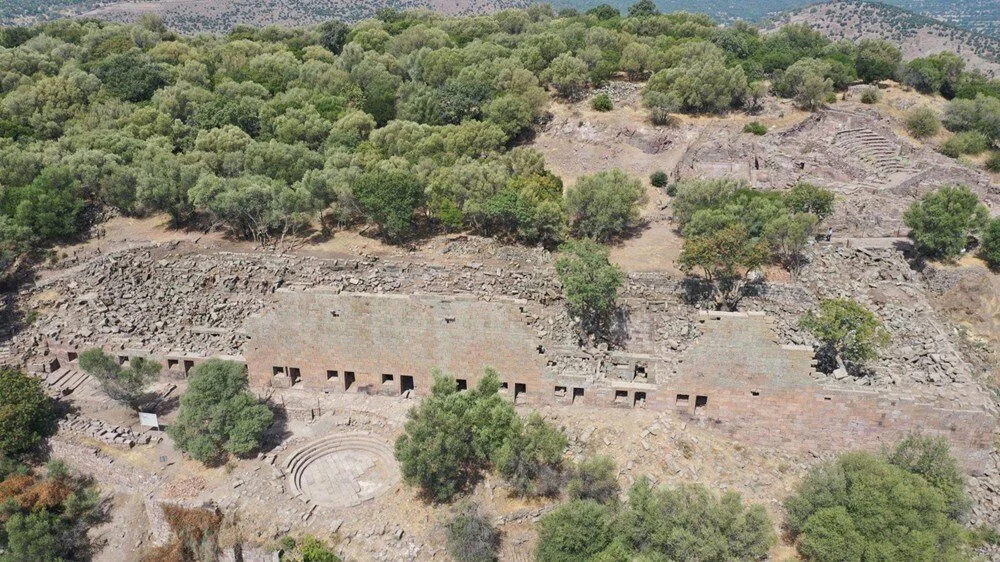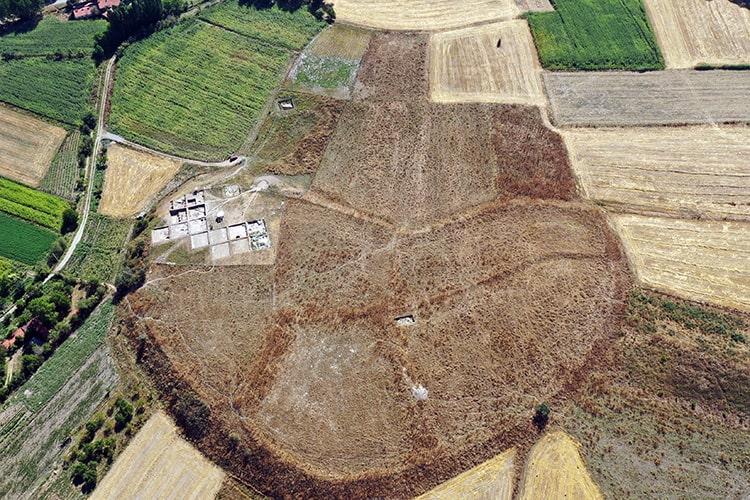The 2100-year-old steles carried by military helicopter from Kımıl Mountain in Adıyaman’s Gerger district will be exhibited in Perre Ancient City after restoration and conservation works.
In 2021, a region similar to the cult area on Mount Nemrut was found on Mount Kımıl and 2 steles, one of which was cut in half, were found at the foot of the mountain.
One of the steles shows the handshake scene of Apollo Mitras and King Antiochos. The stele measures 1.3×1.76 and weighs 3.5 tons. The other stele, measuring 1.16×1.76 and weighing 2 tons 200 kilos, has inscriptions on both sides.

Margherita Facella from the University of Pisa and Charles Crowther from Oxford University studied the inscriptions on the steles. It was seen that the inscription included the laws and will of King Antichos.
Gaziantep Restoration and Conservation Regional Laboratory Director Ayşe Ebru Çorbacı and her team joined the stele, which was divided into two and on which there was a handshake scene of Apollo Mitras and King Antiochos, with special adhesives by throwing a pin in between. The deep and capillary cracks were aesthetically filled with a hydraulic lime binding mortar. With this aesthetic filling, it is aimed to prevent rainwater from entering the steles and to be seen well.
The steles will be placed on pedestals northeast of the necropolis area of Perre Ancient City after maintenance and repair work.
Perre ancient city
The ancient city of Perre was founded by the Kingdom of Commagene in the 2nd century BC. The city was one of the most important cities of the Commagene Kingdom and was geopolitically important.

Captured by the Roman Empire in 72 AD, Perre became an important episcopal center with the adoption of the Christian religion in the 4th century AD. In the 6th century, it lost its importance with the Arab invasion.




